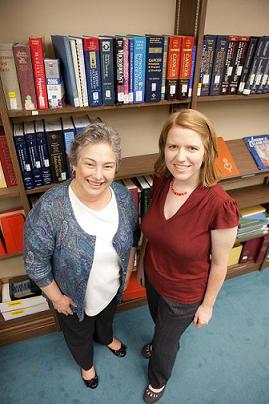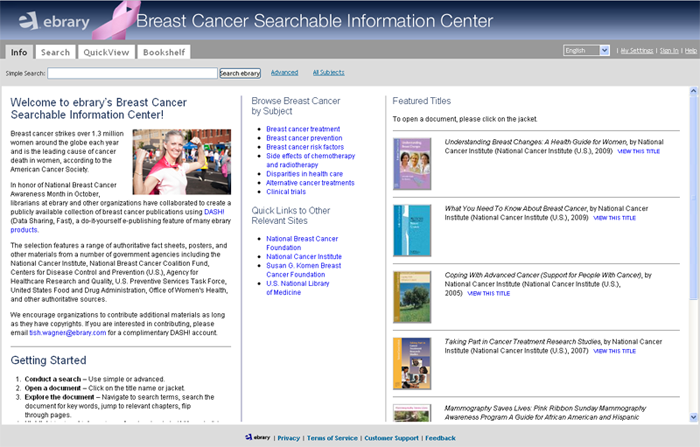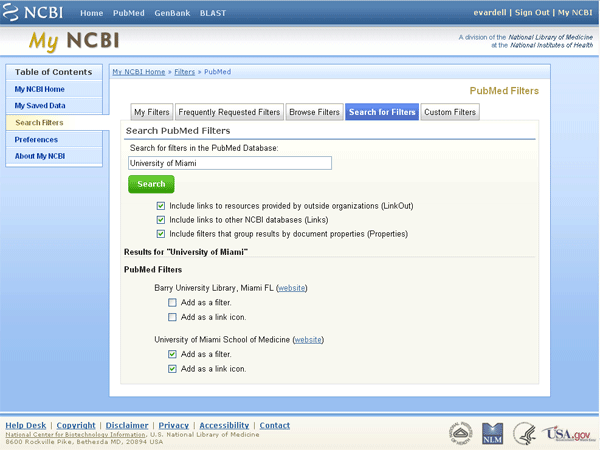The Least You Need to Know Series: BioMed Central
- Details
- Parent Category: Calder Communications Blog
- Category: Tips for Researchers
- Hits: 99793
BioMed Central is a UK-based, for-profit open access publisher committed to the free widespread dissemination of STM (Science, Technology and Medicine) journals. BMC provides immediate, barrier-free access to 207 journals, 20 tracked by ISI and 77 with Impact factors. BMC is owned by Springer Science + Business Media and has over 300 member institutes in 39 countries that access various additional products and services requiring a subscription. BioMed Central also operates Open Repository, a hosted digital repository solution for institutions.
- All research articles in BioMed Central's journals receive rapid and thorough peer review. (BioMed's standard processing fee for authors is $1580 for an article, but some journal pricing varies.)
- When starting a new open-access journal, BMC journal management system incorporates online tools for manuscript submission, peer review and editorial decision making.
- Many BioMed Central journals are citation-tracked and already have Impact Factors.
- All research articles published by BioMed Central may be freely accessed, re-used and re-distributed.
- BioMed Central supports PubMed Central and other digital repositories, and encourages self-archiving by authors.
Please see Calder Library Electronic Databases page for links to BioMed Central and other databases.
Resources for National Breast Cancer Awareness Month
- Details
- Parent Category: Calder Communications Blog
- Category: New Resources Announcements
- Hits: 98303
In honor of National Breast Cancer Awareness Month, the Calder Library would like to highlight some resources for both patients, health care professionals, and researchers who are grappling with breast cancer.
Today e-brary announced a new, free resource for breast cancer publications. The Breast Cancer Searchable Information Center brings together many of the publicly available breast cancer resources from the National Cancer Institute, the FDA, and other reputable resources. Take some time to browse and search through this wealth of information.
Read more: Resources for National Breast Cancer Awareness Month
The Least You Need to Know Series: RefWorks
- Details
- Parent Category: Calder Communications Blog
- Category: Tips for Researchers
- Hits: 102750
RefWorks is a popular, freely available, web-based bibliographic citation tool supported by the University of Miami.
With RefWorks you can:
- Organize and create your own collection of citations – no more index cards to write out and organize!
- Enjoy automatic formatting as you import references from PubMed, Scopus, PsycInfo, CINAHL, and others.
- Organize your citations in folders when working on special projects.
- Search your RefWorks account quickly and easily – RefWorks creates author, descriptor and periodical indices when importing citations which aids in one click retrieval. It even works within QUOSA!
- Create bibliographies with a few clicks of the mouse with Write-n-Cite. Make changes and reformat your bibliography in seconds! No more looking up how to cite in a specific style.
- Manage alerts by using RefWorks’ RSS feed reader to link to your favorite RSS feeds and import data directly into RefWorks.
- Use RefGrabIt to add book citations from any popular book seller like Barnes & Noble and Amazon to your RefWorks account.
- If you have an existing EndNote account, your citations can be exported to RefWorks.
Searching for Electronic Health Record Articles in PubMed
- Details
- Parent Category: Calder Communications Blog
- Category: Tips for Researchers
- Hits: 107320
PubMed has a specialized option that will allow you to quickly find articles on Electronic Health Records (EHR). From PubMed, www.pubmed.gov, log into your MyNCBI account. If you don’t have a MyNCBI account, please ask one of the Reference Librarians how to enable the powerful, new features of PubMed by creating your MyNCBI account.
After signing in, click on the Topic-Specific Queries link.
Read more: Searching for Electronic Health Record Articles in PubMed
Journal Titles Proposed for Cancellation in 2011
- Details
- Parent Category: Calder Communications Blog
- Category: Tips for Researchers
- Hits: 106180
Below you will find a list of titles being considered for cancellation in 2011 based on overall usage, subscription price, cost per use, impact factor, and number of faculty publications. Faculty are asked to review the list and send any comments or suggestions to Suzy Burrows at
ACOG Practice Guidelines (ACOG)
American Surgeon (SE Surg.Cong.)
Annals of Nutrition and Metabolism (Karger)
Annals of Otology, Rhinology & Laryngology (Annals Pub. Co.)
Autoimmunity (Informa)
Cancer Investigation (Informa)
Cell Communication and Adhesion (Informa)
Channels (Landes)
Chemotherapy (Karger)
Children’s Health Care (Informa)
Cleft Palate-Craniofacial Journal (Allen)
Critical Care (BMC)
Digestion (Karger)
Disease Markers (IOS)
Drug Safety (Kluwer)
Endocrine Research (Informa)
Epidemiology and Infection (Cambridge)
Free Mobile Resources from the US Government
- Details
- Parent Category: Calder Communications Blog
- Category: For Your iPhone/Blackberry/Android
- Hits: 108401
The US Government has a tidy selection of apps and mobile-configured websites for your handheld device. Go to: http://www.usa.gov/ and click on the More Mobile Apps button (lower right of the screen). Click on the All Apps link. Apps and mobile-enabled websites include:
 MedlinePlus Mobile: a lite version of MedlinePlus.gov available for all mobile devices at: http://m.medlineplus.gov
MedlinePlus Mobile: a lite version of MedlinePlus.gov available for all mobile devices at: http://m.medlineplus.gov  BMI Calculator from NHLBI: allows you to easily calculate the body mass index and thus percentage of body fat (only available for the iPhone).
BMI Calculator from NHLBI: allows you to easily calculate the body mass index and thus percentage of body fat (only available for the iPhone).
Introducing the New SciVerse
- Details
- Parent Category: Calder Communications Blog
- Category: New Resources Announcements
- Hits: 97724
Are you used to searching Scopus? How about Science Direct? Wouldn't it be great if you could search both at the same time? Now you can with SciVerse. SciVerse combines Scopus and Science Direct into a new platform with added "applications" designed to enhance your research. SciVerse even gets rid of the duplicate articles between databases. The current applications include:
- Methodology Section Search Application - search within the methodology section only for full-text articles in Science Direct
- Sentence Matching Application - assesses search results and display query words in the full sentences where they appear in Scopus
- Prolific Author Search Application - find the most "prolific authors" publishing articles about search terms, link into articles by that author within Scopus
Open Access Journals – 10 Years Later
- Details
- Written by: Suzy Burrows
- Parent Category: Calder Communications Blog
- Category: Tips for Researchers
- Hits: 103403
Millions of articles have appeared during the past decade on the open access movement in scientific publishing. Recently, an article by Jocelyn Kaiser, Science writer who covers biomedical research and policy, well summarizes the highlights of this movement: “Free journals grow amid ongoing debate,” Science 20 August 2010 329(5994):896-8. The following timeline was created from this article.
2000: BioMed Central began with plans to make research papers freely available on the Internet by supporting publication costs through other publishing ventures.
+ NIH launched the PubMed Central archive, proposed by Harold Varmus, then director of the NIH, to make research papers freely available within 6-12 months of publication.
2001: Three leading U.S. biomedical scientists - Harold Varmus, Michael Eisen and Patrick Brown - started Public Library of Science (PLoS) to make peer-reviewed research papers freely available on the Internet by charging authors a fee and giving them copyright.
2002: BioMed Central began charging author fees, which now range from $1,300-$2,400 per paper for most of its 206 journals.
2003: Public Library of Science launched its first journal – PloS Biology – and attracted talent from top journals with a grant from the Gordon and Betty Moore Foundation.
+ An academic project called the Directory of Open Access Journals launched with 861 journals and now tracks about 5,000 scholarly and scientific journals, two-thirds of which are peer-reviewed.
2006: PLoS ONE was launched, with a new peer-review model in which reviewers check articles for scientific rigor but not for importance. The journal’s submissions and revenue soared, as did criticism for the journal’s high volume and acceptance rate. PLoS ONE now has an impact factor in the top 25% of biology journals and is the world’s largest journal in terms of volume.
2008: The NIH Public Access Policy, requiring grantees to submit copies of their accepted peer-reviewed manuscripts to PubMed Center for posting within 12 months of publication, is implemented.
+ Springer, the large commercial publisher, bought the profitable BioMed Central and joined the open-access initiatives of other commercial publishers.
+ The Open Access Scholarly Publishers Association was founded to establish standards and distinguish the reputable open-access journals.
2009: Studies by Philip Davis found only an 8% citation advantage for open-access articles in developed countries during the first two years after publication, but twice the download rate of open access articles.
2010: PLoS Biology and PLoS Medicine are both very highly ranked journals with high rejection rates. With PLoS ONE and other journals, PLoS is on track to make a small profit, a landmark for PLoS and open-access publishing as a whole.
+ Between 7% and 11% of the world’s peer-reviewed scientific journals are now open access and are produced by publishers big and small for fees to authors ranging from $500 -$3000 per paper.
+ 70% of eligible manuscripts are being deposited in PubMed Central as a result of the 2008 NIH Public Access Policy mandate, up from 20% in 2008.
+ PubMed Central attracts 420,000 visitors each weekday, only 25% from university computers, suggesting the archive is used not only by researchers, but by patients, students, and clinicians as well.
Updates from Your Favorite Databases: PubMed, CINAHL, and more
- Details
- Parent Category: Calder Communications Blog
- Category: Tips for Researchers
- Hits: 101989
CINAHL, a nursing and allied health database, has a new look and has also enabled new enhancements, such as:
- Text-to-Speech option: users can have the HTML version of the article read out loud and can even select the accent and reading speed for the audio.
- Text Translation: HTML articles can be machine-translated into 33 languages; however, remember that this translation may not be fully accurate as it is machine-generated.
PubMed, a database of the biomedical literature, made some notable improvements:
- PubMed now allows up to 15 filters in one’s My NCBI account.
Read more: Updates from Your Favorite Databases: PubMed, CINAHL, and more
Find + Download PDFs = QBPlus
- Details
- Parent Category: Calder Communications Blog
- Category: New Resources Announcements
- Hits: 103053
QUOSA Browser Plus (QBPlus): A Browser Plug-in That Indicates Which Articles are in PDF and Helps Download Them
QBPlus is a Plug-in tool for Internet Explorer or Firefox browsers for PC. To get started, just paste UM’s unique QBPlus link (http://qbplus.com/umiami/) into your browser and follow the prompts to install it. After your one-time registration (use your UM email address to register), you can use QBPlus by simply going to the same QBPlus link.
When using QBPlus, you will see a QBPlus toolbar in the browser which provides buttons for easy downloading of PDF articles from your searches in PubMed MEDLINE or the OvidSP databases and many other tools. A unique feature of QBPlus are PDF icons displayed next to PubMed and Ovid search results to indicate which articles are available as full text PDFs. To download them to a Windows folder, just click in the checkboxes, then click on the red Sigma “Save to” button. You can designate any windows folder as the destination for your articles, and specify a file naming convention. Here is a screenshot to illustrate:
New Faces at the University of Miami Hospital Library
- Details
- Parent Category: Calder Communications Blog
- Category: Come to the Library!
- Hits: 99489

We are pleased to announce that the UMH Library is now staffed by librarians Jenny Garcia-Barcena and Emily Vardell. To continue to bring UMH access to the best evidence-based resources and tools to support health care decisions, Jenny and Emily are at the UMH Library from 8:30 to 12, Monday to Friday, and at the UM Calder Memorial Library from 12 to 5. Since June 1st, the library has seen an increase in visitors, as well as an increase in the number of article and expert search requests. In addition to free article delivery and expert searches, the library also offers access to top medical databases and journals, customized email alerts sent to you on the author or topic of your choice, and individualized classes for all UMH health care professionals. Please come and visit the library soon to find out about the many free information resources and services available to UMH health care professionals and researchers.
- Welcome, Class of 2014!
- Calder Faculty Member Graduates from Leadership Institute
- NextBio: an Added Layer to Your Results
- PubMed Clinical Queries Page Redesign
- Share Your Customized PubMed Settings
- Explore the Redesigned MedlinePlus
- Keeping up with the Latest Evidence
- Powerful Tool for Demographic Information
- Mandatory Compliance: My NCBI Replaces eRA Commons for Bibliography Management Effective July 23, 2010
- Pending Interruption in UpToDate Services
Page 12 of 17



